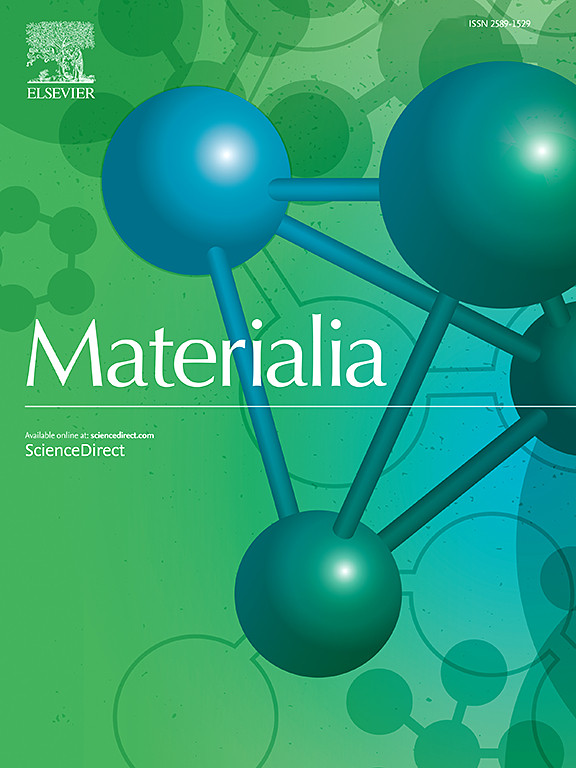kanthal底物上快速直接加热原位合成和固定化Co₃O₄纳米壁
IF 3
Q2 MATERIALS SCIENCE, MULTIDISCIPLINARY
引用次数: 0
摘要
传统的合成方法如水热或化学气相沉积通常涉及多步骤过程,处理时间长,能耗高,或需要昂贵的设备。在这项研究中,证明了一种新的一步直接加热(DH)方法在坎塔尔线圈上原位合成和固定化Co3O4纳米壁。DH方法提供了一种简单、快速和节能的方法,允许在仅30瓦的电力下在20分钟内合成和固定Co3O4纳米材料。通过x射线衍射、x射线光电子能谱、拉曼光谱和场发射扫描电镜证实了Co3O4纳米壁的形成。这些表征技术一致表明,纳米壁随着加热时间的增加而变大。优化后的Co3O4纳米壁的比电容为193 F/g,带隙在1.81 ~ 2.11 eV之间。这种利用DH方法将Co3O4纳米壁固定在电阻式kanthal衬底上的方法在超级电容器的实际应用中具有显著的优势,使其能够集成到电子设备中,如可穿戴技术。本文章由计算机程序翻译,如有差异,请以英文原文为准。

In Situ synthesis and immobilization of Co₃O₄ nanowalls on kanthal substrate using a rapid direct heating approach
Conventional synthesis methods such as hydrothermal or chemical vapor deposition often involve multi-step processes, long processing times, high energy consumption, or require expensive equipment. In this study, a novel one-step Direct Heating (DH) method for the in-situ synthesis and immobilization of Co3O4 nanowalls on a kanthal coils has been demonstrated. DH method offers a simple, rapid, and energy-efficient approach, allowing for the synthesis and immobilization of Co3O4 nanomaterials in just 20 min with only 30 W of electrical power. The formation of Co3O4 nanowalls was confirmed through X-ray diffraction, X-ray photoelectron spectroscopy, Raman spectroscopy, and field emission scanning electron microscopy. These characterization techniques consistently showed that the nanowalls became larger with increasing heating duration. The optimized Co3O4 nanowalls exhibited a specific capacitance of 193 F/g, with a band gap ranging from 1.81 eV to 2.11 eV. This immobilization of Co3O4 nanowalls using DH method on resistive kanthal substrates presents significant advantages for practical applications in supercapacitors, enabling their integration into electronic devices such as wearable technology.
求助全文
通过发布文献求助,成功后即可免费获取论文全文。
去求助
来源期刊

Materialia
MATERIALS SCIENCE, MULTIDISCIPLINARY-
CiteScore
6.40
自引率
2.90%
发文量
345
审稿时长
36 days
期刊介绍:
Materialia is a multidisciplinary journal of materials science and engineering that publishes original peer-reviewed research articles. Articles in Materialia advance the understanding of the relationship between processing, structure, property, and function of materials.
Materialia publishes full-length research articles, review articles, and letters (short communications). In addition to receiving direct submissions, Materialia also accepts transfers from Acta Materialia, Inc. partner journals. Materialia offers authors the choice to publish on an open access model (with author fee), or on a subscription model (with no author fee).
 求助内容:
求助内容: 应助结果提醒方式:
应助结果提醒方式:


